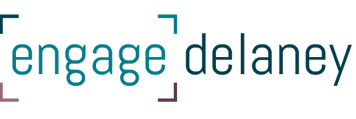The Requirement to Get Engaged is Growing
When looking at the growing legal requirements for organizations to engage their stakeholders, it is helpful to think about how any fundamental societal shift takes place. Take, for example, the legal framework around drinking and driving. These laws were not created to prevent the rising toll of tragedies taking place on our highways; rather, the laws were a response to them. This illustrates how the legal requirements that compel people, and organizations, to act in a certain way always lag behind societal needs and expectations.
The same is absolutely true of the emerging legal requirements for organizations – both public and private – to engage their stakeholders. Take hospitals for example. In Ontario, during 2016, the new legal and policy drivers that compel hospitals to engage broadly have been dramatic. With mounting evidence of improved health outcomes and financial efficiencies, the requirement to engage includes a major legal and one policy driver to create an effective framework to change culture and get results.
We believe these new requirements signal the potential for change across many sectors.
Ontario’s Bill 41, an Act to amend various Acts in the interests of patient-centred care, received Royal Assent on Dec. 8, 2016. This Act, generally referred to as the Patients First Act, refers to and/or amends over 20 pieces of existing legislation. This new legislation creates an additional requirement for hospitals to achieve greater levels of transparency and accountability. These requirements are combined with the preexisting Excellent Care for All Act requirements (reg. 188/15) for every healthcare organization to establish an approach to patient relations. As well, patients can now express and resolve concerns and aspirations internally, or petition the new Patient Ombudsman (established July 2016) to lobby on their behalf.
Accreditation Canada has added new required operating practices (ROPs) to improve patient safety through enhanced client, family, community and staff engagement. The new ROPs require Boards to ensure their organizations have mechanisms for listening to the patient and family voice in a timely way, to oversee meaningful partnership development with stakeholders, and to ensure organizational capacity for engagement.
These legal and policy drivers indicate an increasingly broad expectation that patients and their families be placed at the centre of decision making about their care.
This is often generically referred to as person-centred care. The saying “nothing about me, without me” has been increasingly adopted by patients and patient-support groups across the country and around the world. It is now a direct requirement and public expectation that hospital boards and their leadership will create the conditions where person-centred care can take place.
These requirements are also driven by increasing evidence that by placing patients at the centre of decisions about care, we can simultaneously improve the patient’s healthcare experience, leading to improved health outcomes at reduced cost – thus achieving what has become known as the triple aim. Establishing and maintaining a person-centred approach to care delivery is based squarely on the organizational ability of health-service providers to engage with patients, their families, community and staff in an ongoing way.
What does this mean for other sectors? It means the status quo is no longer acceptable. It means you cannot wait until your stakeholders drag you into court, or beat you up in the press or social media, or that you can engage on your own terms.
Stakeholder engagement is primarily a risk-management function. It helps organizations stay ahead of, or even shape, public opinion. It is effective intelligence gathering from the people and authorities to whom you need to pay attention. There are well-defined best practices for stakeholder and community engagement that are not only effective, but timely and relatively low cost.
In terms of an organizational New Year’s engagement resolution, why don’t you consider an engagement capacity assessment? It’s quick, straightforward and best of all – free. Just email us at delaney@rmdelaney.com for the kit. Put “capacity assessment” in your email subject line and you’re on your way to building better stakeholder relations and an expanded social licence to operate.
You also can check out the engagement quality standards published by IAP2 to see how your engagement lines up with international best practices and expectations. You can take stock and commit to improvement.



